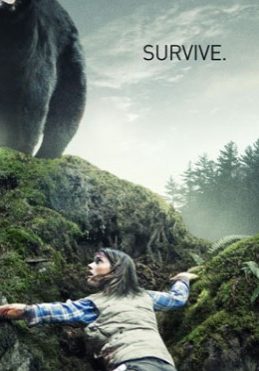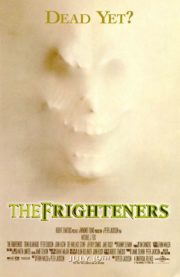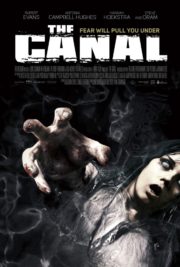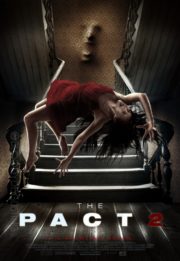The Lurking Pause of Backcountry
“Nothing scares me more than the wilderness.” This chilling sentiment resonates deeply in Adam Macdonald’s “Backcountry,” a 2014 horror film that skillfully navigates the treacherous waters of nature’s unforgiving realm. In this visceral tale of survival, a couple finds themselves ensnared in the jaws of the wilderness—one that harbors not just a physical predator, but an overarching layer of psychological dread. With a runtime of only 92 minutes, “Backcountry” swiftly encapsulates the fear inherent in nature itself, the unpredictable factors that can lead to our undoing.
The story follows a young couple, Jenn (Missy Peregrym) and Alex (Jeff Roop), as they venture into the Canadian wilderness for a camping trip. As they dive deeper into the isolated forests, the couple’s adventure transforms into a harrowing ordeal when they become hunted by a relentless bear—a terrifying predator imposing its will on the innocents. This tightly-knit narrative combines real-life fears with primal terror, making it a gripping watch for horror enthusiasts and casual viewers alike.
Crafting the Wilderness Horror
“Backcountry” draws its horror not from supernatural elements but from the very essence of nature, underscoring the narrative with a palpable sense of foreboding. Throughout the film, each scene unfolds with an impending dread—a slow-burning suspense. From the outset, the vastness of the forest looms over the couple, simultaneously beautiful yet treacherous. The movie expertly juxtaposes serene nature with the underlying threat that comes with it, creating an atmosphere where danger feels omnipresent even before the bear makes an appearance.
This natural ambiance is compounded by the isolated setting, utilizing the wilderness to foster an eerie connection with the environment. Every rustling leaf, every distant howl, becomes a harbinger of disaster. The filmmakers rely heavily on this sense of solitude, demonstrating that sometimes the most haunting horror comes from the unknown lurking just out of sight.
Furthermore, the director’s choice to keep many of the horrifying moments ambiguous enhances the tension. The viewer is left to imagine the fate of the couple, drawing them into the psychological horror of what could happen, leaving their imaginations to fill in the gruesome blanks. This deliberate choice builds a layer of unsettling suspense throughout the film, making the eventual revelation hit all the harder, shaking the audience to its core.
Visual Storytelling in Backcountry
Harrowing yet jaw-droppingly beautiful, the cinematography of “Backcountry” plays a pivotal role in its horror delivery. Jeremy Bittner’s photography captures the majestic yet hostile landscape in stunning clarity, highlighting the entrapping beauty of the wilderness while simultaneously illustrating its potential for danger. The color palette shifts from vibrant greens and blues—evoking tranquility—to dimmer hues when the tension rises, embodying the couple’s descent into peril.
The use of camera angles is also expertly employed to enrich the viewing experience. Extreme close-ups capture the couple’s primal fear in juxtaposition to wide shots that emphasize their tiny figures dwarfed by the looming trees. This contrast evokes a sense of insignificance under the vast sky, aligning viewers with the characters’ desperate struggle against nature—and the lurking beast.
When the bear is finally revealed, the special effects lean into a semblance of realism that evokes genuine terror. Unlike many modern horror films that lean excessively on CGI, “Backcountry” opts for practical effects that are visceral and convincing, engendering an atmosphere where the audience feels real tension as the predators hunt their prey. This choice of authenticity often creates indelible moments that linger long after the credits roll.
The Sound of Dread
The soundtrack in “Backcountry” works harmoniously to amplify the horror experience. Elements of nature become characters of their own; the rustle of leaves, distant animal calls, and the chilling quiet moments create a cacophony of despair. The sound effects are particularly effective in building tension—just as the misshapen branch snaps underfoot or an echoing cry breaks the silence, the audience is pulled closer into the unfolding nightmare.
Additionally, the absence of sound is just as impactful, creating moments where the heartbeats of the characters become the only sound heard. This minimalism fosters an immediate sense of vulnerability, reminding viewers of the dire situation the couple faces, devoid of any modern comforts or security. The contrasts in sound—between overwhelming noise and complete silence—provide a gripping rhythm that pushes the audience to the edge of their seats, absorbing every ominous moment with bated breath.
Character Depth in Terror
Jenn and Alex, portrayed by Missy Peregrym and Jeff Roop, respectively, bring life to the film’s profound sense of dread. Their chemistry makes their characters believable and relatable, allowing viewers to invest emotionally in their well-being. In a genre often populated by one-dimensional characters, “Backcountry” shines by offering depth, showcasing how well-developed their relationships and motivations are.
As the stakes grow higher, the contrasting approaches to fear between Jenn and Alex—her cautious nature juxtaposed against his adventurous spirit—become pivotal in crafting tension. However, some may argue that the character arc reaches predictable points, often taking familiar tropes prevalent in horror cinema. Regardless, the performances resonate as both characters face their impending doom, effectively embodying raw fear, desperation, and instinctive survival.
The film feels heightened, as the immersive performances pull the viewer into their plight. When faced with terror, their reactions are genuine and relatable, maintaining a sense of realism, which is crucial in a survival horror.
Into the Depths of Fear
“Backcountry” operates on various horror layers, oscillating between psychological terror and raw survival. The film primarily leverages the terror intrinsic to nature—uncertain dangers and primal instincts become the star here, nuanced with psychological depth as both characters grapple with their fears. The menace of the bear isn’t just a physical threat; it symbolizes humanity’s vulnerability in the untamed wilderness.
Furthermore, the film wrestles with themes of survival and human limits when confronted with overpowering natural forces—an echo through horror storytelling that reflects both our fascination and fear of the wilderness. While it might not reinvent the wheel within the genre, it effectively scrutinizes our relationship with nature while enveloping the audience in visceral terror.
An Evaluation of Fear
In its essence, “Backcountry” captures the visceral thrill of the horror genre through its compelling storytelling, well-composed visuals, sound design, and character-driven narrative. It presents a genuinely frightening experience—one where the audience may find themselves lost in thought long after the film concludes. This immersive adventure keeps viewers engaged, challenging them to confront the primal fears that hide within nature.
As for audience appeal, those particularly enamored by survival horror or those seeking realistic thrills will be captivated. However, casual viewers may find the slow-burn pacing a touch tedious, as the movie spends considerable time establishing character dynamics before unleashing the terror.
By comparing it to modern horror staples like “The Revenant” or a more psychological approach found in “The Descent,” both elements explore humanity’s darker sides against nature’s backdrop, “Backcountry” stands alone in its simplistic yet effective approach to primal horror.
In conclusion, while “Backcountry” possesses some familiar elements within the horror genre, its execution and resonance pull it from the ordinary. It invites viewers on a bleak journey that unfolds into an adrenaline-packed struggle for survival, showcasing nature’s duality—its beauty intertwined with danger. Potential viewers should prepare for graphic content involving terror and visceral scenes that can invoke discomfort, echoing the primal fears of existing in an unpredictable world. “Backcountry” is an invigorating experience for horror enthusiasts willing to immerse themselves in the heart-racing chaos of nature’s unforgiving embrace.




